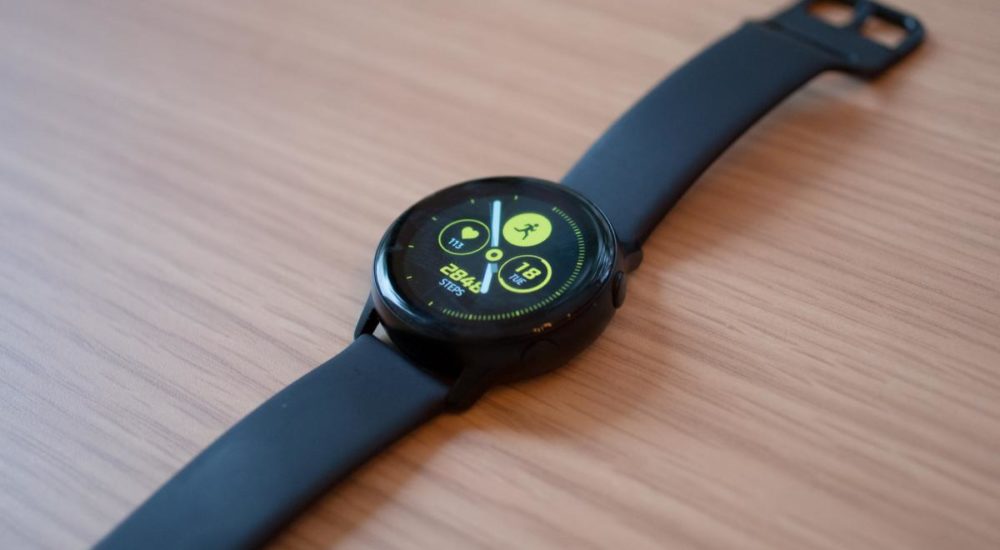As a smartwatch, the Galaxy Watch Active ticks every box but as a fitness tracker, plenty are left blank
Pros
- Good looking
- Excellent smartwatch functionality
Cons
- No ANT+
- Exercise screens can’t be customised
- Samsung Health isn’t a great app
For many people, and indeed predictive texting systems, the word Galaxy belongs after the word Samsung. That was a problem for the South Korean tech giant, given that in previous generations its wearables had the word Gear after the brand name.
So it’s perhaps unsurprising that the company has decided to streamline. Although the Galaxy Watch Active looks like a new product off the back of the impressive Galaxy Watch, it actually has roots in the Gear Sport, just as the Galaxy Watch owes much to the Gear S3.
Rebrand or not, does it deserve a spot on your wrist?

Samsung Galaxy Watch Active: What you need to know
Like the Samsung Galaxy Watch replacing the Gear S3, the Galaxy Watch Active is very much an incremental update on the Gear Sport. It has the same 360 x 360 OLED screen, GPS and heart-rate tracking built in, and the round face.
But there are changes. Firstly, the rotating bezel has gone, meaning it’s only controlled by the touchscreen and two side buttons. Secondly, it’s considerably lighter and a touch smaller, coming in at 23 grams to the Gear Sport’s 50 grams. The screen is now 1.1in, meaning it looks a smidge sharper, too packing in 464 pixels per inch, compared to its predecessor’s 424.
While it has a slightly faster processor (a 1.15GHz dual-core Exynos 9110, compared to its predecessor’s 1.0GHz Exynos 3250), the Galaxy Active does lose a bit of battery capacity, shipping with a 230mAh cell – 70mAh down on the Gear Sport’s specs.

Samsung Galaxy Watch Active: Price and competition
Still, like the Galaxy Watch before it, these specs result in a pleasant surprise in the pricing department. The Galaxy Watch Active retails for £230 – a £70 saving on the original Gear Sport.
Not that that makes it cheap for a sports wearable. For less than that you can buy the excellent Garmin Vivoactive 3 (£160, but without the fancy OLED screen), Polar Vantage M (£199, also without fancy OLED) or Fitbit Versa (£160, but without built-in GPS). The Fitbit Ionic, which does have GPS, has now fallen in price and can be had for around £200 too.
You could also pay £50 more for the original Galaxy Watch (£300), which is mostly the same, but a bit bigger, with a rotating bezel and a larger battery.

Samsung Galaxy Watch Active: Design
Say what you like about Samsung: the company knows how to design stylish-looking electronics. Gone are the terrible design decisions of its early stab at wearables: the Galaxy Watch Active is a very fine-looking timepiece.
Its 1.1in watch face is circular, with a thick centimetre-thick black bezel around the side. This manages to look intentional: a throwback to traditional watches, rather than a tacit acceptance that the race to end the bezel is less advanced on wearables than it is on phones.
Away from the screen, it has two buttons on the right-hand side, which is a sensible move. While tapping at such a small screen is tricky at the best of times, it becomes a living nightmare if you’re dealing with sweat or rain: occupational hazards of the fitness watch. For that reason, too, the straps are easily changeable, meaning you can stick to the rubber defaults for a run, but then put on something more dressy for a meeting.
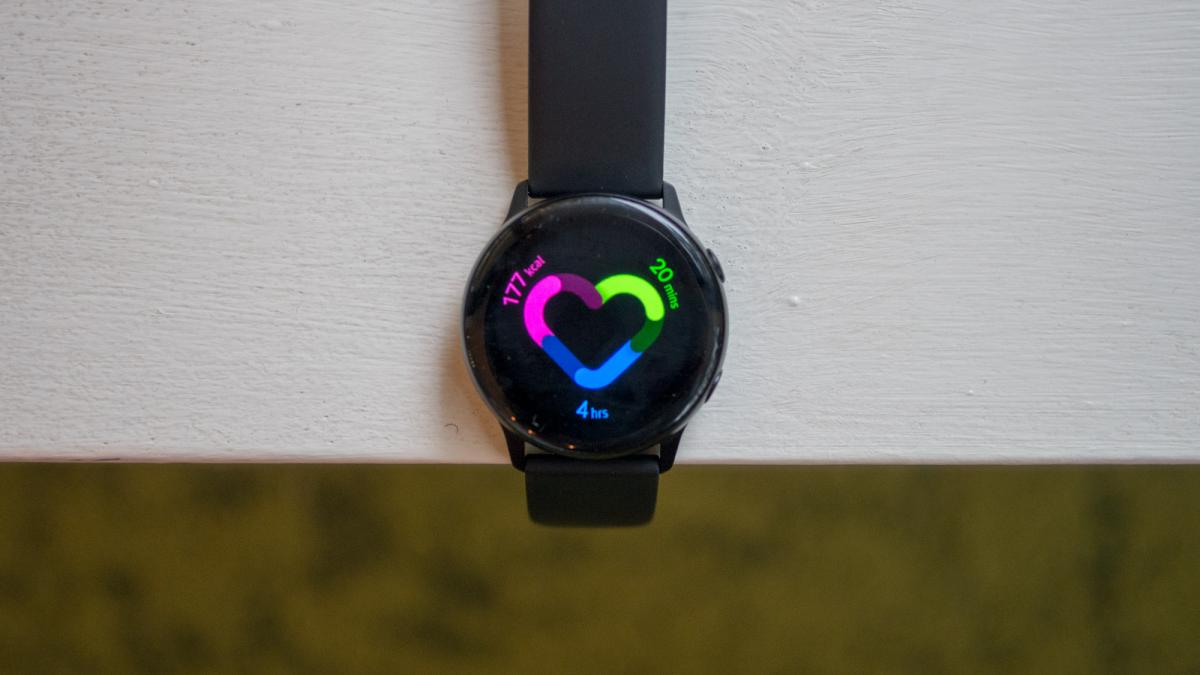
While it looks close to a supermodel in the world of smartwatches, it’s worth remembering that remains a relatively low bar to clear. And to be blunt, smartwatches are still no match for regular old wristwatches in the looks department. The main complaint is how thick it is: 10.5mm may not sound like a lot, but it’s noticeably thicker than my Huawei P20 Pro handset. Imagine that sticking out from your wrist and you’ll start to see the problem.
But I don’t want to overstate that: it’s still a fine-looking smartwatch, and despite its chunkiness, it feels comfortable on the wrist, barely noticeable after you’ve put it on, which is handy given it tracks sleep as well as activity.
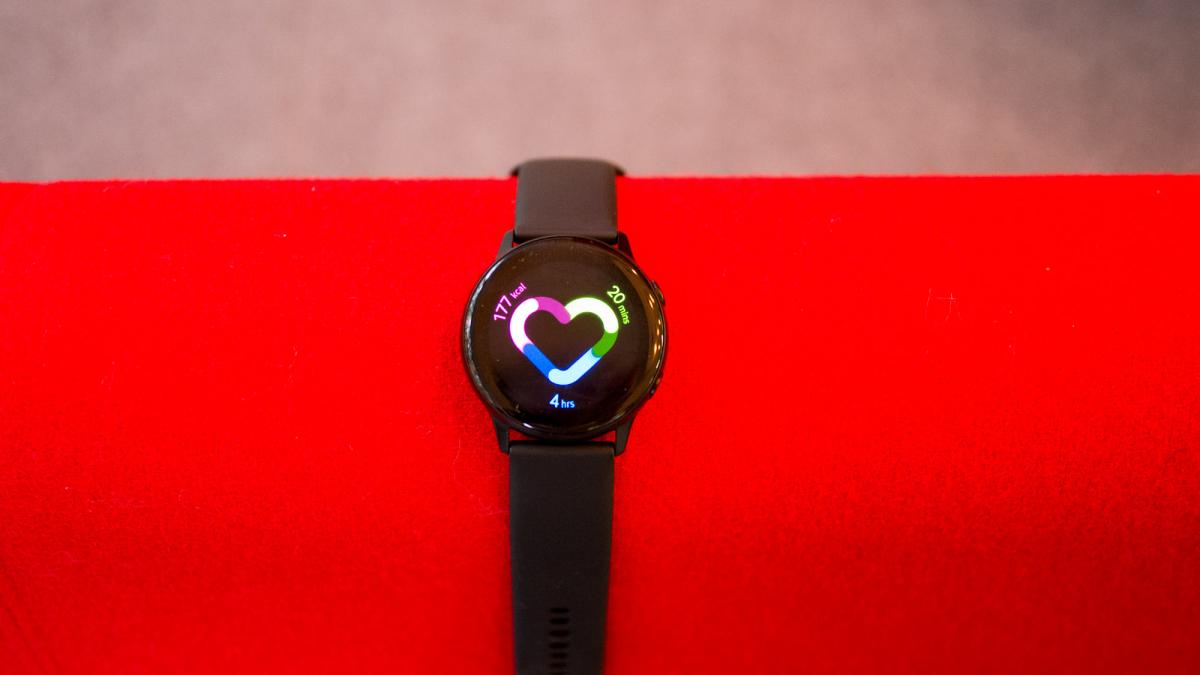
Samsung Galaxy Watch Active: Performance
As a smartwatch, the Galaxy Watch Active functions very nicely indeed. There are plenty of watch faces to choose from, and notifications come through with a friendly buzz, displaying crisply on the screen. Finding what you need on the watch is easy, and there are plenty of customisations you can add: a remote control for music, or even a widget where you tap it every time you drink water or a coffee for those watching their intake. Unlike wearables that suggest you take a stroll after you’ve been inactive for a while, the Galaxy Watch Active picks out quick exercises you can do in the office with instructions on screen.
You can also add Samsung Pay and make contactless payments right from your wrist, and Spotify is built-in with support for offline playlists within its 4GB of onboard storage. Add to that the built-in GPS and you’ve got a watch that’s all you need for a long run. It also theoretically has blood-pressure tracking, but in such a limited way that we weren’t able to test it: a pity as it’s one of the few differentiators between this and the original Galaxy Watch.

The battery life is acceptable enough, typically lasting two days before needing to return to its charger: a standard wireless block (and don’t forget you can charge it off the back of the Galaxy S10, too). When the watch is low on power, it’ll turn into a nice greyscale display with limited functionality to eke out the last bits of juice, while ensuring you don’t miss out on any steps being added to your total.
As a running watch, though, it’s more of a mixed bag. Let’s get the good out of the way, first: this is far more accurate than the Gear Fit 2 was for me. While Samsung’s excellent fitness band was consistently 0.2km off the pace, for me the Galaxy Watch Active was close to being bang on. Here’s the tracking from a 5k Parkrun in Hackney:
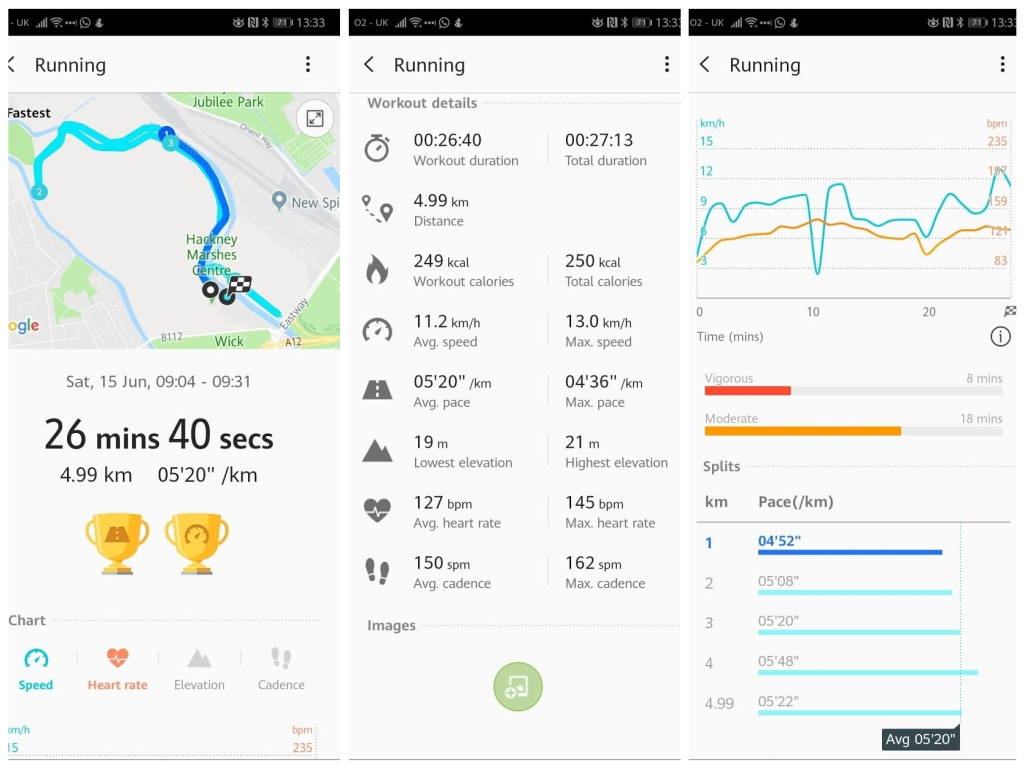
And as you can see from the screenshots above, the data it collects is reasonably thorough too. The heart rate numbers are highly questionable, but the rest is pretty solid, and though the Galaxy Watch Active doesn’t support ANT+ external chest straps, certain third-party watch faces an the ability to connect to Bluetooth models.
Most people won’t care about missing support for third-party sensors, but I have two issues that prevent this becoming my go-to fitness tracker.
The first is that while the data above is all well and good when you’re done, the experience while running is much harder to follow. Samsung puts three data fields on each screen, and you can swipe between three screens in total. What it doesn’t let you do is customise these in any way, so most of the time you’ll find yourself looking at the default, which shows average pace, time and heart rate. For me, current pace and distance travelled are far more important metrics, but unlike Garmin and Polar watches, there’s no way of rearranging the data.
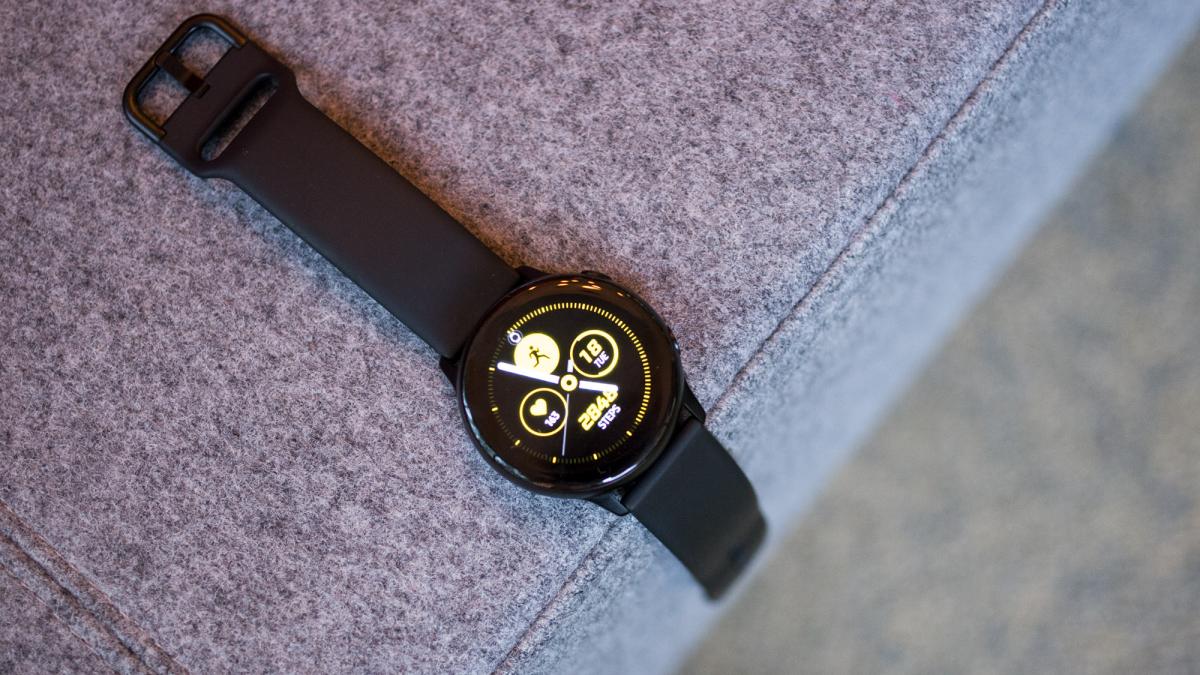
The second issue is the need to use Samsung Health to view said data once your workout is over. This comes pre-installed on Samsung devices but is another thing to download if you use any other manufacturer’s phone, alongside the Galaxy Watch software. Bluntly speaking, it’s not a good product. Not only does it not have a web version to consult, but the app isn’t hugely intuitive and finding past exercises isn’t the easiest thing in the world. Third-party app support is also pretty weak, with only Strava listed, and by most accounts, it’s pretty flakey.
That may not be an issue for you but for all its versatility in terms of smartwatch features, Samsung’s refusal to play nicely with other fitness apps and its failure to let you customise the running experience feels terrible shortsighted. MapMyRun, Endomondo and Strava do, admittedly, have apps you can install on the watch, but it doesn’t feel as satisfying as a solid first-party solution working hand-in-glove with the hardware.

Samsung Galaxy Watch Active: Verdict
All of which leaves me in two minds about recommending the Samsung Galaxy Watch Active. For serious runners and cyclists, it doesn’t feel like the right choice: you’re better served by the superior battery life and data field customisation options of Garmin and Polar devices.
On the other hand, it’s a great looking and feature packed wearable that’s fine for casually keeping an eye on your fitness, especially if you’re already tied into the Samsung ecosystem. But in that case, you might be better off spending a little more on a Galaxy Watch which is just as much of a fitness tracker – with the exception of blood pressure monitoring – and also has longer battery life, a rotating bezel and optional 4G.
That’s the main issue with the Galaxy Watch Active: as a smartwatch, it’s fabulous, but as a serious sports watch, it falls flat.
Source: expertreviews.co.uk

